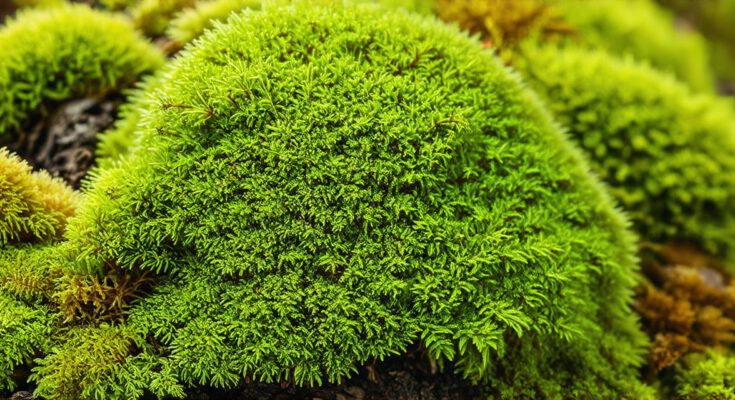Introduction
Cryptogams are fascinating organisms that have been around for billions of years. They have a diverse range of forms and functions, making them an essential part of the ecosystem. In this guide, we will explore the different types of cryptogams and their significance in nature. Whether you are a seasoned naturalist or just starting out on your journey to understand the natural world, this guide will provide you with valuable insights into these fascinating organisms.
Types of Cryptogams
Cryptogams can be broadly classified into two categories: fungi and lichens. These two groups differ significantly in their structure, lifestyle, and mode of nutrition. Let us take a closer look at each group.
Fungi
Fungi are one of the most diverse groups of living organisms on Earth. They are decomposers that break down dead plant and animal matter into simpler compounds that can be used by other organisms. Fungi are classified based on their lifestyle, mode of nutrition, and structural characteristics. Here are some examples of fungi:
- Saprophytes: These are the most common type of fungi. They obtain nutrients from dead organic matter such as leaves, twigs, and fallen fruits. Examples of saprophytic fungi include mushrooms, toadstools, and puffballs.
- Mycorrhizal fungi: These fungi form a mutualistic relationship with plant roots. They obtain carbohydrates from the plant while providing the plant with nutrients such as nitrogen, phosphorus, and potassium. Examples of mycorrhizal fungi include ectomycorrhizae (such as oak trees) and endomycorrhizae (such as tomatoes).
- Parasitic fungi: These fungi obtain nutrients by parasitizing living organisms such as plants, animals, and other fungi. Examples of parasitic fungi include rusts (such as the apple scab) and smutts (such as wheat smut).
Lichens
Lichens are unique organisms that consist of a fungus and a photosynthetic partner, usually an alga or cyanobacterium. They form a symbiotic relationship that allows them to obtain nutrients from both the fungus and the photosynthetic partner. Lichens play a crucial role in the ecosystem as they are primary producers that convert sunlight into energy through photosynthesis, just like plants do. Examples of lichens include mosses (such as reindeer moss), liverworts (such as oak moss), and hornworts (such as bladderwort).
Examples of Cryptogams in Nature
Now that we have a better understanding of the different types of cryptogams let us take a look at some examples of these fascinating organisms in nature.
Fungi
- Mushrooms: These are perhaps the most well-known examples of fungi. They come in many shapes and sizes and can be found all over the world. Some edible mushrooms include morels, chanterelles, and shiitakes, while others are poisonous such as the deadly “death cap” and the “destroying angel”.
- Puffballs: These are large, round fungi that have a soft, spongy texture. They can be found all over the world and are often used in traditional medicine to treat a variety of ailments.
- Mycorrhizal fungi: These fungi form a mutualistic relationship with plant roots. For example, the mycorrhizal fungus associated with oak trees is called ectomycorrhizae, while the mycorrhizal fungus associated with tomatoes is called endomycorrhizae.
Lichens
- Reindeer moss: This is a type of lichen that is commonly found in arctic and subarctic regions. It is an important food source for many animals, including reindeer, caribou, and musk oxen.
- Oak moss: This is a type of lichen that forms on oak trees. It is believed to have medicinal properties and has been used in traditional medicine for centuries.
- Hornworts: These are submerged aquatic plants that are covered in a layer of photosynthetic algae. They play an important role in the ecosystem as they help to purify the water by absorbing excess nutrients and producing oxygen.
Real-Life Examples of Cryptogams in Action
Let us take a look at some real-life examples of cryptogams in action to illustrate their importance in nature.
Fungi
- Saprophytic fungi: These fungi play an important role in breaking down dead organic matter in the ecosystem. For example, when a tree dies and falls to the ground, saprophytic fungi break down the wood into simpler compounds that can be used by other organisms such as insects, animals, and plants.
- Mycorrhizal fungi: These fungi play an important role in maintaining the health of plants. For example, mycorrhizal fungi associated with oak trees help to transport water and nutrients from the root system to the rest of the tree, which helps the tree to grow tall and strong.
- Parasitic fungi: These fungi can be harmful to both plants and animals. For example, rusts such as the apple scab can cause significant damage to apple trees, while smutts such as wheat smut can destroy entire crops of wheat.
Lichens
- Reindeer moss: This lichen is an important food source for many animals in arctic and subarctic regions. For example, reindeer rely on reindeer moss as a source of food during the winter months when other food sources are scarce.
- Oak moss: This lichen has been used in traditional medicine for centuries due to its medicinal properties. For example, oak moss is believed to have antibiotic and antifungal properties, making it useful in treating a variety of infections.
- Hornworts: These submerged aquatic plants play an important role in purifying the water in ponds and lakes. By absorbing excess nutrients such as nitrogen and phosphorus, hornworts help to prevent algal blooms that can cause water pollution and oxygen depletion.
Conclusion
Cryptogams are fascinating organisms that play an important role in the ecosystem. From breaking down dead organic matter to maintaining the health of plants and animals, cryptogams have a diverse range of functions. Whether you are a seasoned naturalist or just starting out on your journey to understand the



